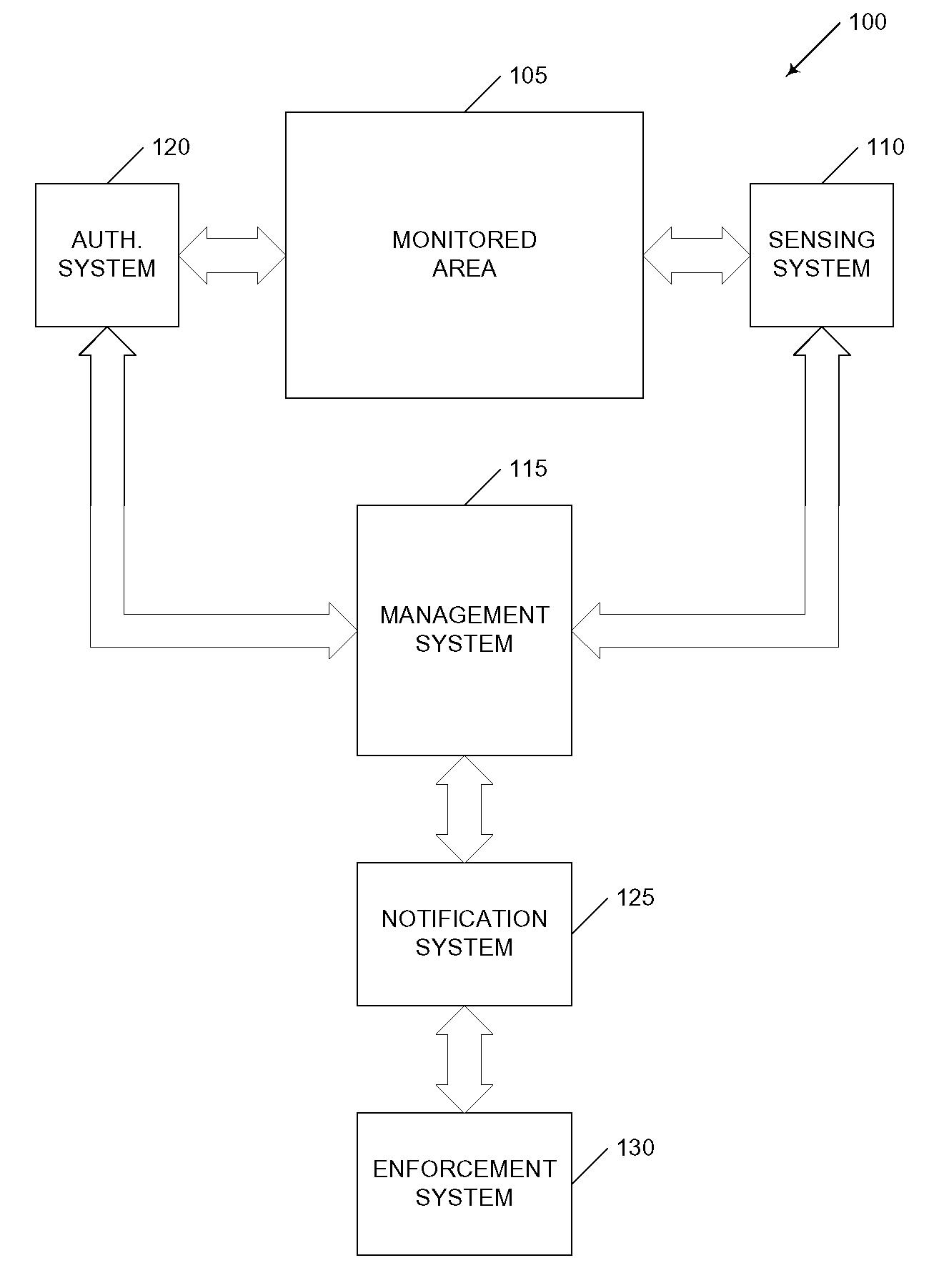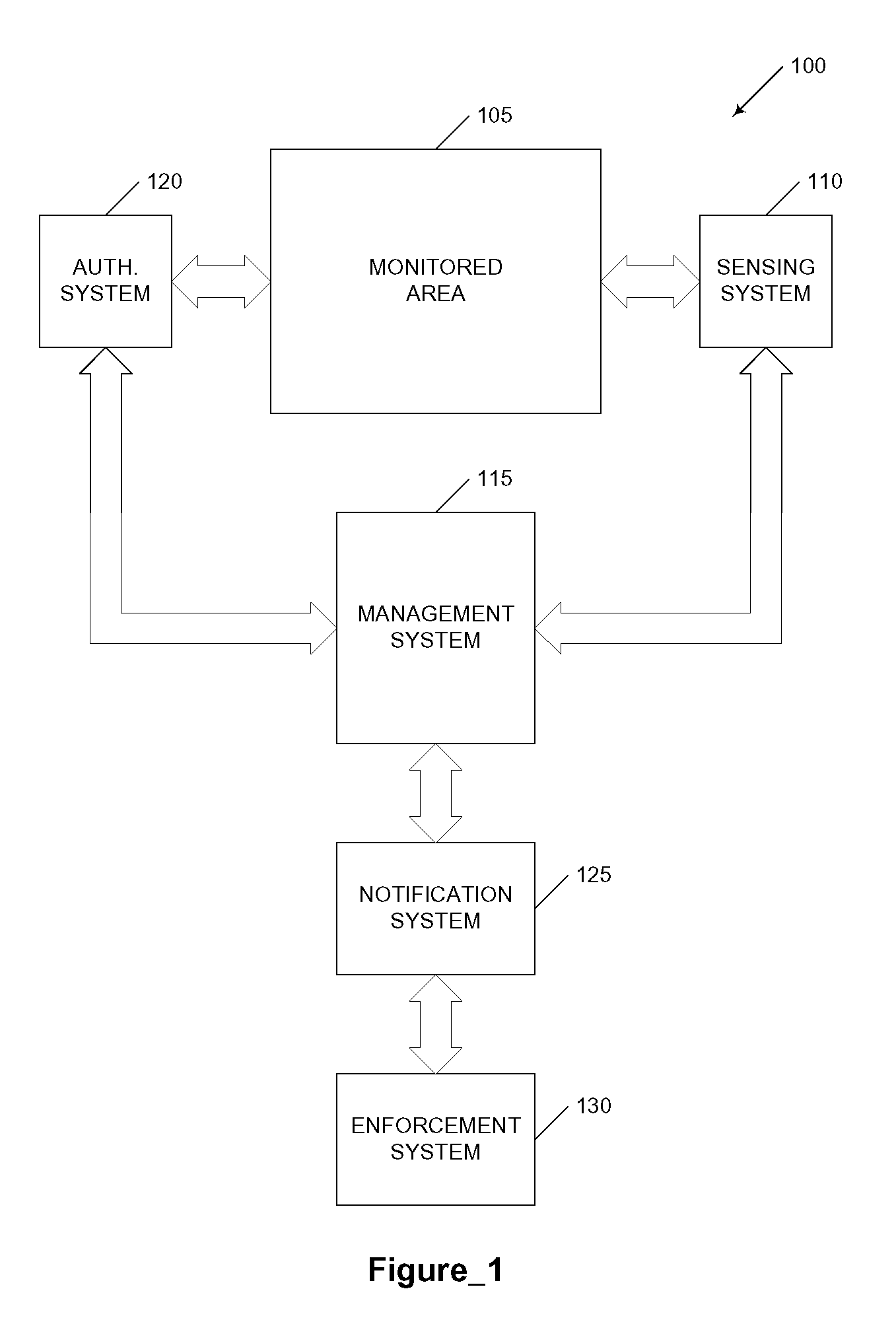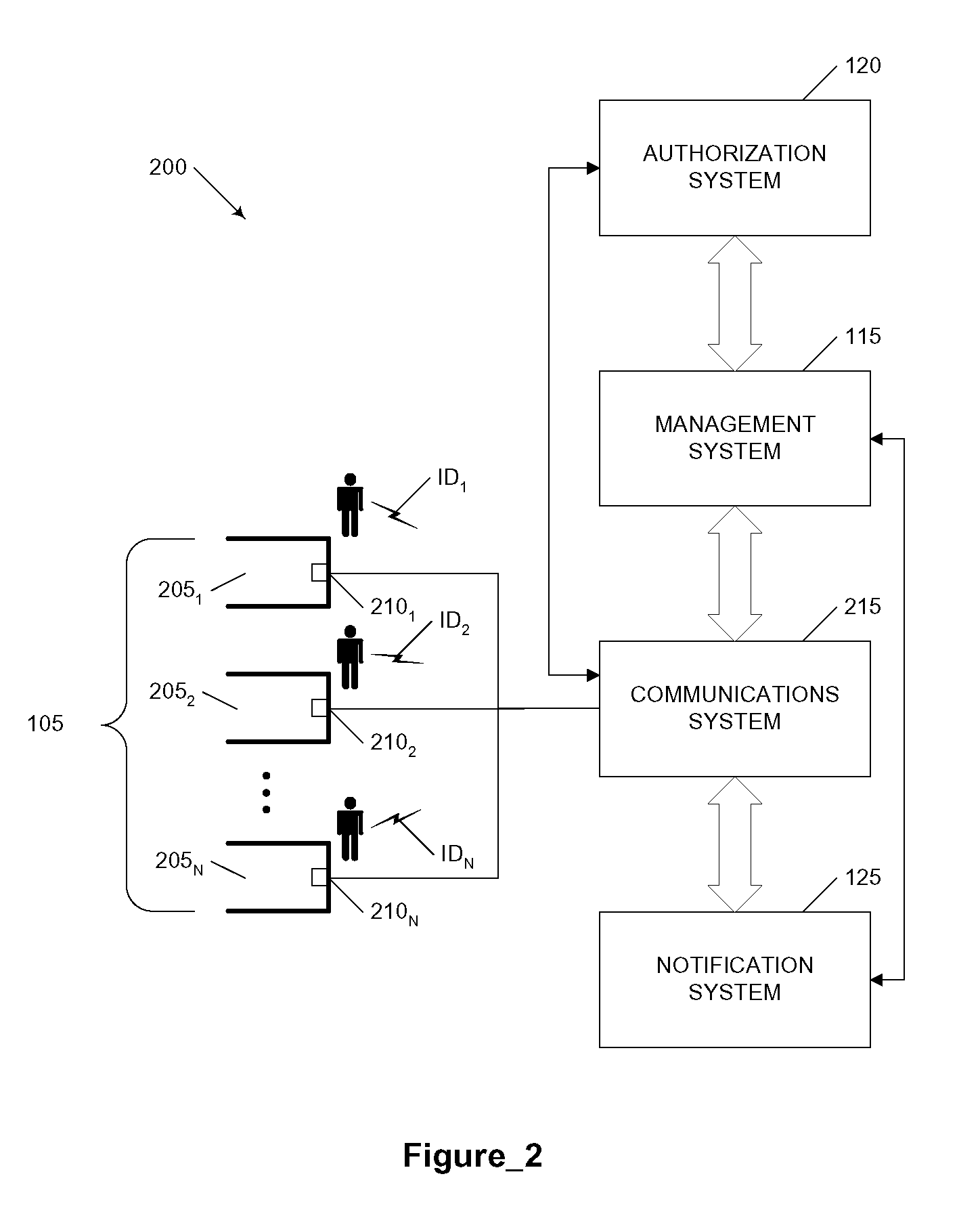Automated parking lot system, method, and computer program product
a parking lot and automatic technology, applied in the field of automatic parking lot systems, computer program products, and propagated signals for managing vehicle parking, can solve the problems of increasing the difficulty of monitoring parking restrictions in any of the above ways, increasing the difficulty of tasks, and limiting the number of vehicles
- Summary
- Abstract
- Description
- Claims
- Application Information
AI Technical Summary
Benefits of technology
Problems solved by technology
Method used
Image
Examples
Embodiment Construction
[0018] The following description is presented to enable one of ordinary skill in the art to make and use the invention and is provided in the context of a patent application and its requirements. Various modifications to the preferred embodiment and the generic principles and features described herein will be readily apparent to those skilled in the art. Thus, the present invention is not intended to be limited to the embodiment shown but is to be accorded the widest scope consistent with the principles and features described herein.
[0019]FIG. 1 is a block diagram of a parking management system 100. System 100 includes a monitored area 105 having one or more vehicle parking spaces. A sensing system 110 detects an occupancy status of the vehicle parking spaces of monitored area 105 and provides occupancy status signals to a management system 115. Some systems 100 will include an authorization system 120 for receiving information regarding monitored area 105 and providing it to manag...
PUM
 Login to View More
Login to View More Abstract
Description
Claims
Application Information
 Login to View More
Login to View More - R&D
- Intellectual Property
- Life Sciences
- Materials
- Tech Scout
- Unparalleled Data Quality
- Higher Quality Content
- 60% Fewer Hallucinations
Browse by: Latest US Patents, China's latest patents, Technical Efficacy Thesaurus, Application Domain, Technology Topic, Popular Technical Reports.
© 2025 PatSnap. All rights reserved.Legal|Privacy policy|Modern Slavery Act Transparency Statement|Sitemap|About US| Contact US: help@patsnap.com



